Squats are the undisputed champion of leg day. For exceptional lower body strength, you just can’t beat them. Whether you’re using the standard squat or some variation, you should expect great results by working squats into your routine. Variations include the regular back squat, the front squat, the Bulgarian split squat– the list goes on! But have you heard of the underrated Sissy Squat?
The best alternatives to a Sissy Squat using Machines include Leg Extensions, Leg Presses, Hack Squats, Pendulum Squats, Cable Leg Extensions, Smith Machine Back Squats or Front Squats. If you are looking for a Sissy Squat alternative without machines, try Air Squats, Back Squats, Front Squats, Bulgarian Split Squats, or Walking Lunges. These variations will target your quads and core.
The Sissy Squat is a great exercise to add to your routine. Read on and find out more about how it’s done and how it can help you now!
Contents
How Do You Do a Sissy Squat at Home?
Doing the Sissy Squat at home takes a little bit of prep.
You need something to place behind your heels so that your ankles are elevated throughout the whole motion. The object should be approximately 3 inches high and should not roll or slide away during the movement. A pair of dumbbells always works well, but at home you may need to be creative. Books or canned goods may work but remember– the object cannot slide while you squat.
Got something to wedge back there? Good. Now we can get started.
- Stand with feet shoulder-width apart. Heels should be raised on the aforementioned set of objects. Toes remain on the floor pointing forward. Hands should be placed on your hips.
- Bend slightly at the knees and engage your core. There should be a straight line stretching from your neck to your knees.
- Once this angle is achieved, lower your body into a squat. Squat as low as possible for approximately 3 seconds.
- Push with your legs to return to the starting position.
That’s all there is to it!
Keep in mind– the bottom of the motion should be precisely before you lose balance. Once you find this spot, don’t squat past that point. The movement is not beneficial if you’re falling out of your form on each rep.
What Muscles Do Sissy Squats Work?
Sissy Squats are a great variation to regular squats and leg extensions on leg day.
Predominantly, the movement targets your quadriceps. Holding your body at an angle that pushes your core forward, however, also engages your core in a unique way. Whereas the standard squat employs use of the core to a small degree, Sissy Squats really hit your abs hard.
Remember the painstaking care we took to find the perfect object to raise our heels during the squat? Our hard work pays dividends. Keeping our heels elevated in this position during the movement helps engage our calves and glutes. Both muscle groups receive work during the motion.
You’ll want to shout “hip hip hooray” because Sissy Squats also target your hip flexors and adductors. By bending backwards and pushing our hips forward, we use various muscles from the hips all down the posterior chain.
So, what’s the end result of our hard work and dedication? Greater lower body strength, a stronger core, and better balance from practicing awkward positioning.
Sissy Squat Alternatives with Machines
So, you’re at the gym and you’ve heard about this fantastic movement, but you ain’t no Sissy! Relax– neither was King Sisyphus. However, if you feel uncomfortable trying this unusual movement and prefer using machines, you can.
Many traditional gym machines will help target the same muscles and provide just as good of a workout as the Sissy Squat.
1) Leg Extensions
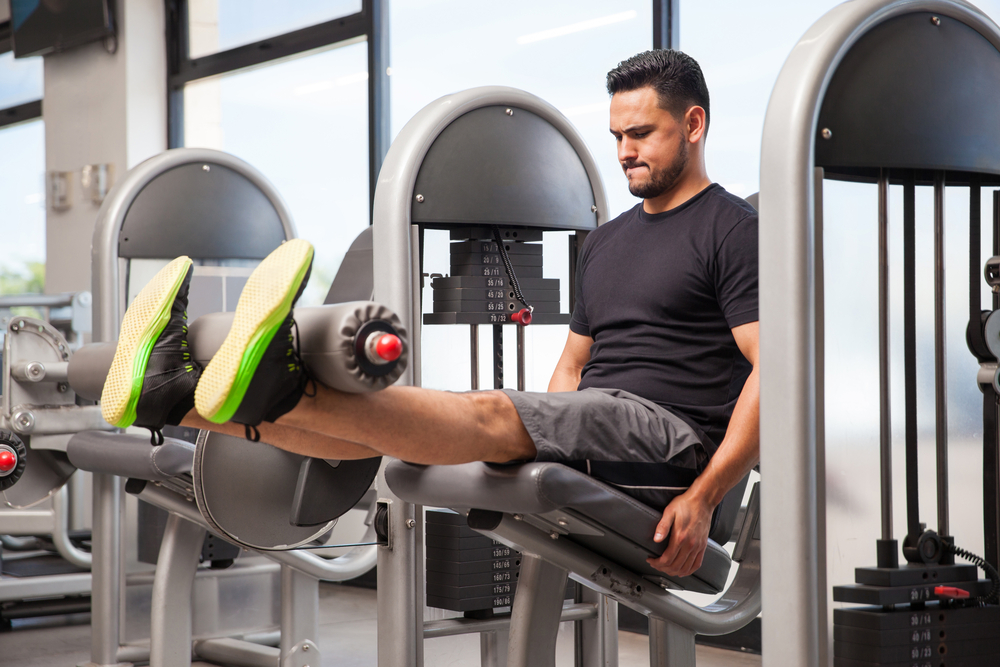
Leg extensions are one of the most popular movements performed on leg day. The movement isolates your quadriceps, mostly hitting the rectus femoris right on top. Here’s how to do it right if you want to feel the burn and build those quads!
- Adjust the back pad so your knees reach the end of the seat when you sit down.
- Adjust the ankle pad so it rests at the top of your ankles.
- Set the pins to your desired weight.
- Sit down and lean back. Your spine should be neutral and your head and neck straight.
- Grab the handles and push with your legs, extending them until they are straight.
- Bend your knees and return to the starting position.
2) Leg Presses
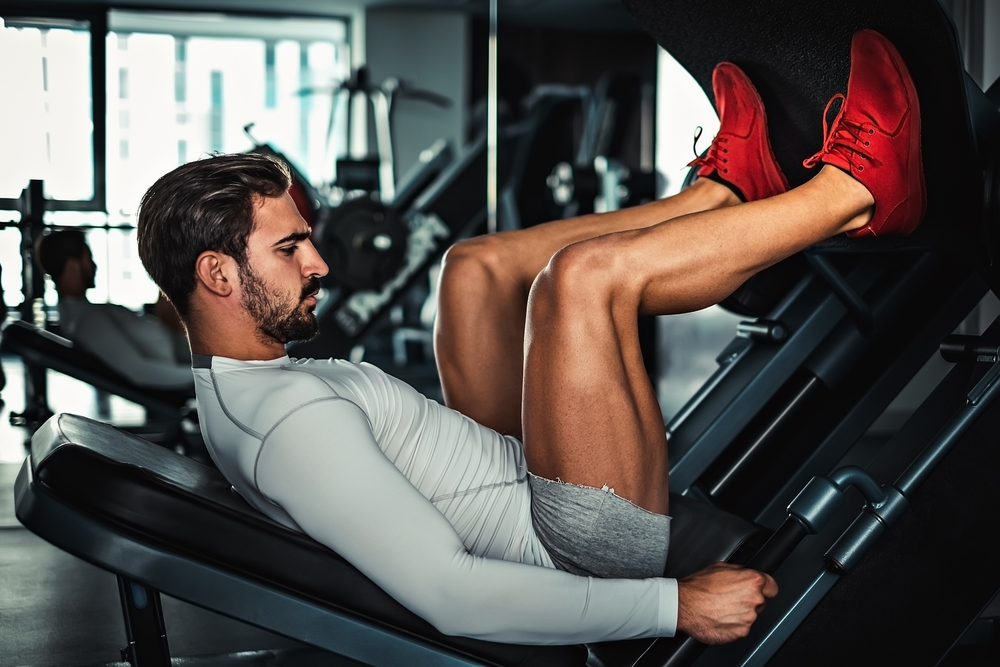
The leg press machine is also very popular in most gyms. For many, it’s the go-to alternative to any standing squat. Using a machine helps you build strong legs while giving the spine a much-needed rest. Here’s how it’s done.
- Adjust the footplate and back pad so that your legs are at a 90-degree angle in the starting position.
- Load your desired weight. For some machines, this means setting a pin. For others, it means loading plates on each side.
- Sit down and place your feet on the footpad about shoulder-width apart. Disengage any safety locks that may be present at this time.
- Take a deep breath and push with your feet until your legs are extended. Do not overextend your knees.
- Bend your knees and return to the starting position.
Machines often have safety mechanisms built right in, but some do not. If yours requires disengaging a safety mechanism before your reps, be sure to re-engage it when you’re done.
3) Hack Squats
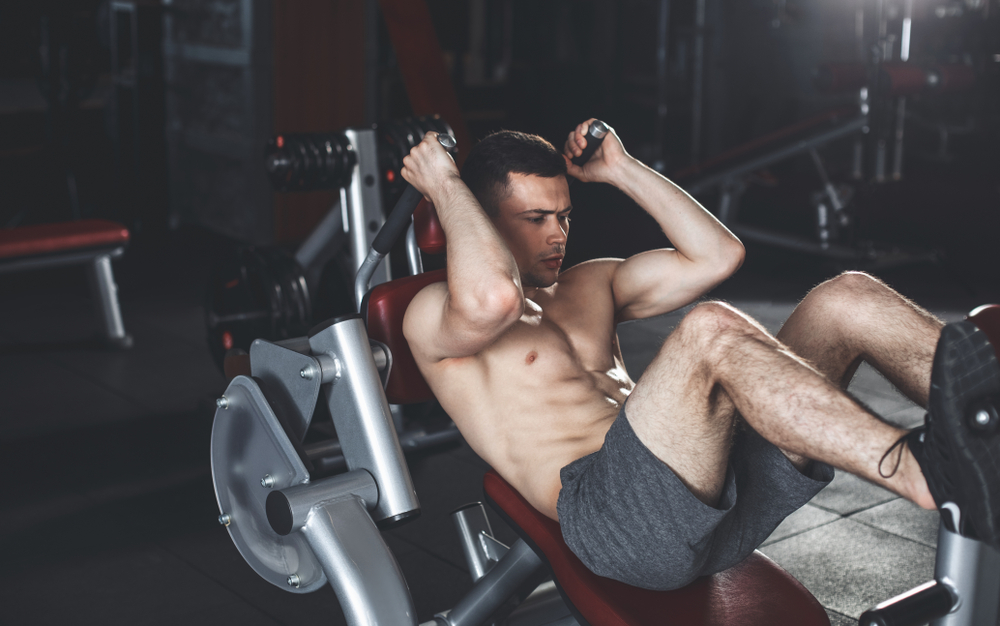
The hack squat is less common, but many gyms feature a hack squat machine. Not only will you target your quads big time, but you also probably won’t have to wait for the machine to open up either. Win-win!
- Place your shoulders against the shoulder pads.
- Feet should be about shoulder-width apart.
- Disengage the safety locks and put your hands on the handlebars.
- Bend your knees and squat until your hips are at parallel or slightly below.
- Push yourself back into the starting position. Repeat as needed.
- Reset all safety locks before exiting the machine.
4) Pendulum Squats

Like the hack squat, the pendulum squat requires a specific machine that may scare away amateur gym goers. This is great for those of us looking to squat without waiting in line for the squat rack to open up. You’ll blast those quads without risk of overloading the spine.
- Load weight onto the machine as needed.
- Adjust the footplate until your shoulders touch the pads and your knees are straight.
- Some machines include handlebars. Grab on if so. If not, grab the shoulder pads.
- Squat down as far as you can go. For pendulum squats, this may be lower than parallel.
- Drive from the feet and push up against the shoulder pads to return to starting position.
5) Cable Leg Extensions
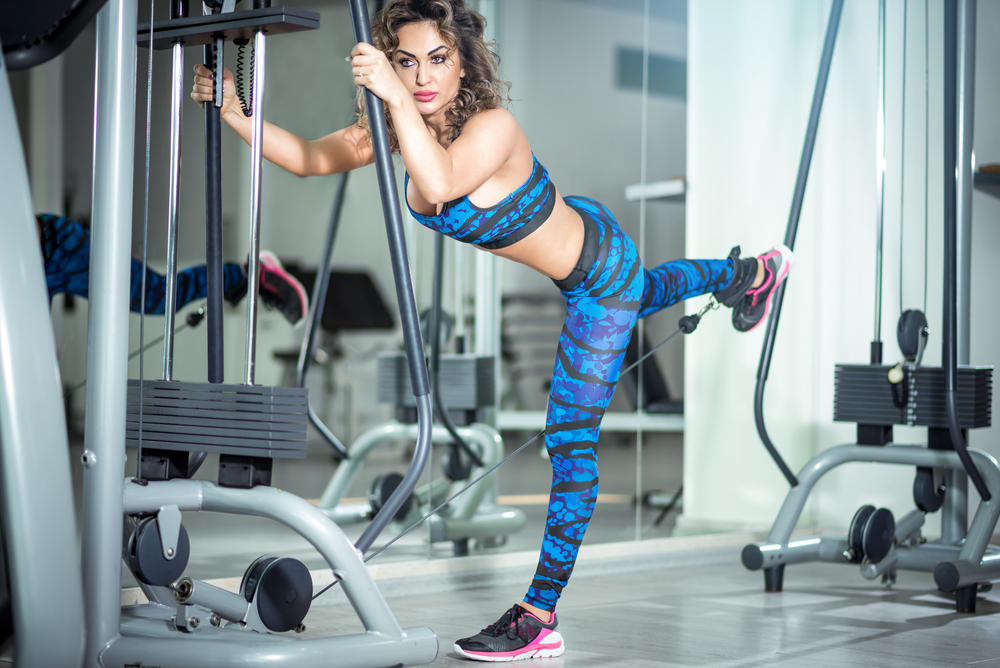
Like the standard leg extension, the cable leg extension is a similar motion that isolates your quadriceps. The cables apply resistance differently than the leg extension machine, making a great variation to sub in intermittently. Here’s how it’s done.
- Secure ankle cuff around ankle.
- Stand or take a seat away from the machine.
- Position your tethered leg so it is behind you, knee bent.
- Extend your leg forward until your leg is straight.
- Return to the starting position.
Repeat the same set for each leg. Cable leg extensions are great for helping correct muscular or strength imbalances.
6) Smith Machine Back Squats
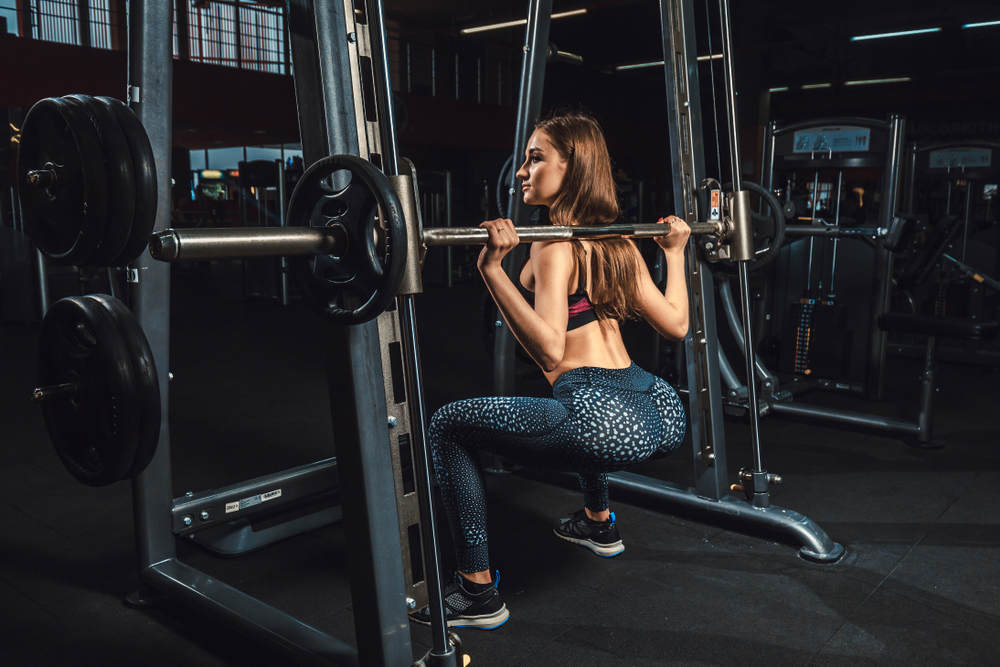
Some weightlifters consider using a Smith machine for squats sacrilege. If you’re willing to weather their judging stares, it’s a great way to ensure the bar path stays straight. Smith machines also have safety mechanisms, so you can lift heavy with less fear or failure or injury.
- Load weight onto the bar and place the bar on your shoulders. Your hands should grip the bar slightly outside of your shoulders. Pinch your shoulder blades together.
- Your feet should be approximately shoulder-width apart and the weight should stay on your heels. Your back should stay straight for the full movement.
- Lower yourself down until your knees are bent and thighs are parallel to the ground.
- Drive from your heels and push back to the starting position.
Be sure to disengage the safety mechanism before your reps and make sure it’s re-engaged when you’re done.
7) Smith Machine Front Squats
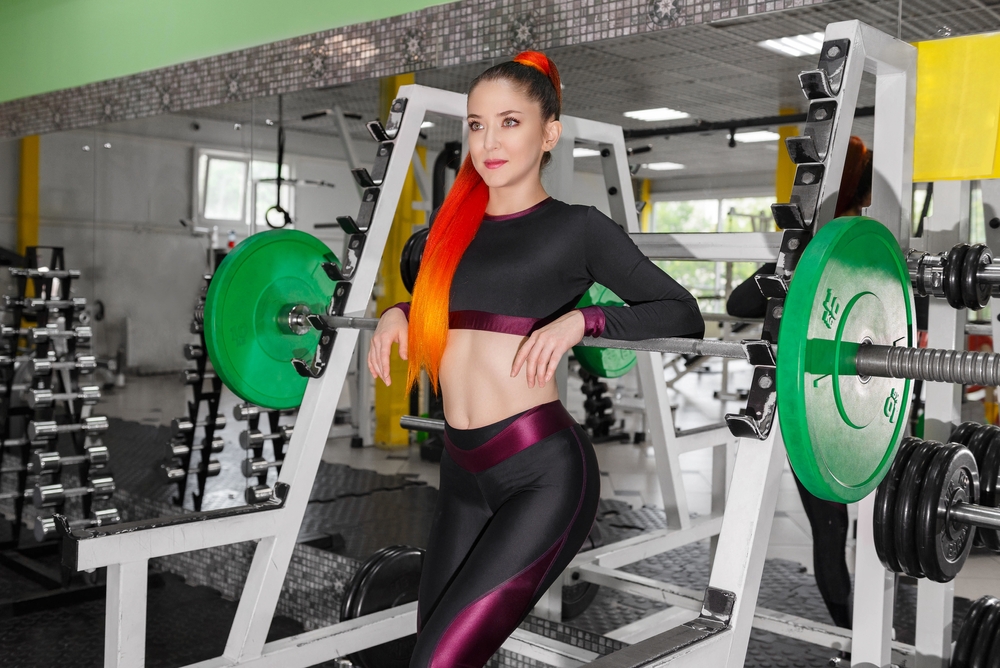
As with the Smith machine back squat, you can load more weight with more confidence. You’ll also be certain the bar path stays straight from start to finish. Front squats, like all squats, target your quads, but you’ll also employ your core more using the front squat variation.
- Load weight onto the bar and place the bar on the top of your chest where it meets your shoulders.
- Your hands may grip the bar in front of you if you’re flexible. Otherwise, crossing your arms in front and placing one hand on the opposite shoulder will help keep the bar locked in.
- Your feet should be approximately shoulder-width apart and the weight should stay on your heels. Your back should stay straight for the full movement.
- Lower yourself down until your knees are bent and thighs are parallel to the ground.
- Engage your core throughout the motion to stabilize.
- Drive from your heels and push back to the starting position.
Be sure to disengage the safety mechanism before your reps and make sure it’s re-engaged when you’re done.
How Do You Do a Sissy Squat Without Equipment?
Sissy squats are great because they require little or no equipment to perform. All you need are a few short objects to help us keep our heels raised.
If you’ve scoured the house and have come up with nothing, no worries!
You can still Sissy squat with nothing to help stabilize at all! Be advised, however, that holding your heels off the ground while performing this movement is very challenging.
We recommend using a table or door frame to help keep you stable when getting accustomed to the movement. As you build stronger quads and core, you will be able to do the Sissy squat freestanding with no equipment or stabilization. It may even become your new go-to party trick!
Sissy Squat Alternatives without Machines
No machines? No problems! You can perform a number of Sissy squat alternatives with barbells, dumbbells, or even your own bodyweight. Here are some to get you started.
1) Air Squats
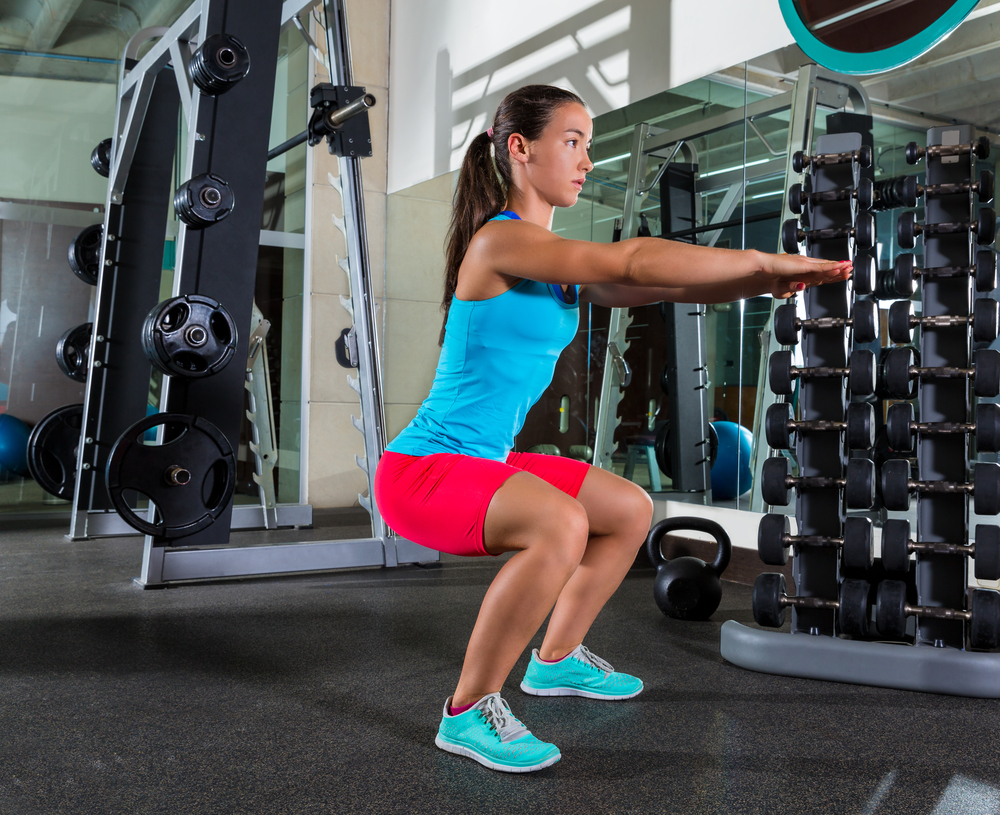
You want to hit those quads with nothing in sight? No problem. All you need for a standard bodyweight air squat is a tiny plot of space to stand and squat. It’s that simple.
- Stand with feet shoulder-width apart. Your weight should be on your heels.
- Lower yourself into a squat.
- Push yourself back to the starting position.
You may feel that keeping your arms out in front helps provide stability, but it is by no means a requirement. You may also add weight by holding a dumbbell or kettlebell in front to turn your air squat into a goblet squat. The possibilities are endless.
2) Back Squats
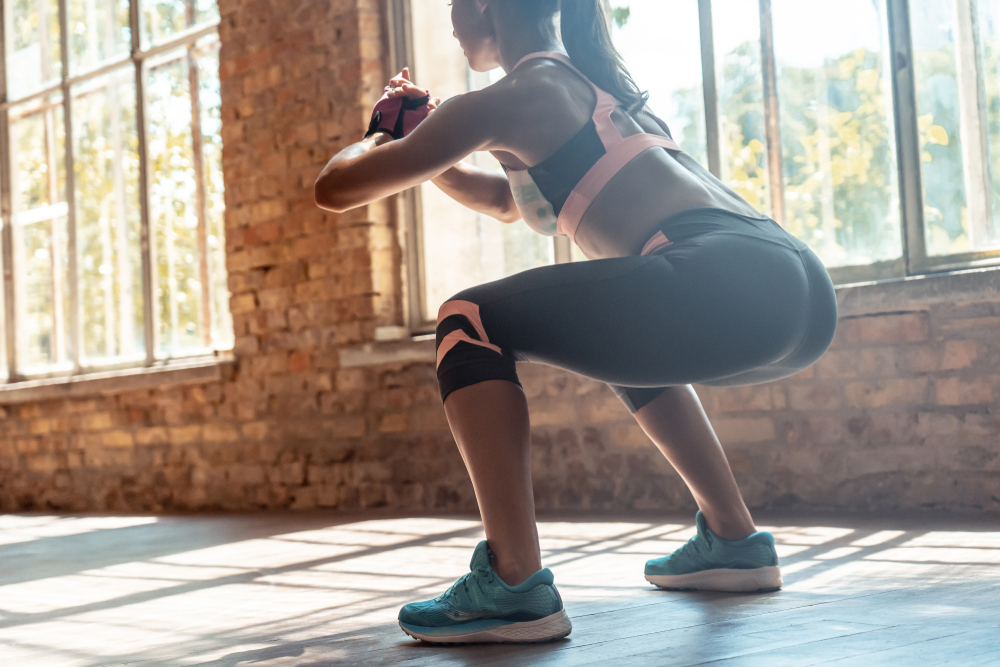
The back squat is the classic variation, and often what people mean if they simply say “squats.” You build exceptional lower body strength– quads, hamstrings, calves, hips, the whole posterior chain– as well as your core and trunk.
- Load weight onto the bar and place the bar on your shoulders. Your hands should grip the bar slightly outside of your shoulders. Pinch your shoulder blades together.
- Your feet should be approximately shoulder-width apart and the weight should stay on your heels. Your back should stay straight for the full movement.
- Lower yourself down until your knees are bent and thighs are parallel to the ground.
- Drive from your heels and push back to the starting position.
3) Front Squats

The less popular second cousin to regular squats– the front squat. You won’t see as many people at the gym doing these, but it’s a shame. Front squats are really great at targeting the same muscles as the back squat, but it hits the core even harder. Don’t expect to front squat as much as you can back squat. Often, people are stronger on a back squat than a front squat.
- Load weight onto the bar and place the bar on the top of your chest where it meets your shoulders. Bring your elbows forward so that your hands are gripping the bar in front of your shoulders.
- Your feet should be approximately shoulder-width apart and the weight should stay on your heels. Your back should stay straight for the full movement.
- Lower yourself down until your knees are bent and thighs are parallel to the ground.
- Engage your core throughout the motion to stabilize.
- Drive from your heels and push back to the starting position.
4) Bulgarian Split Squats
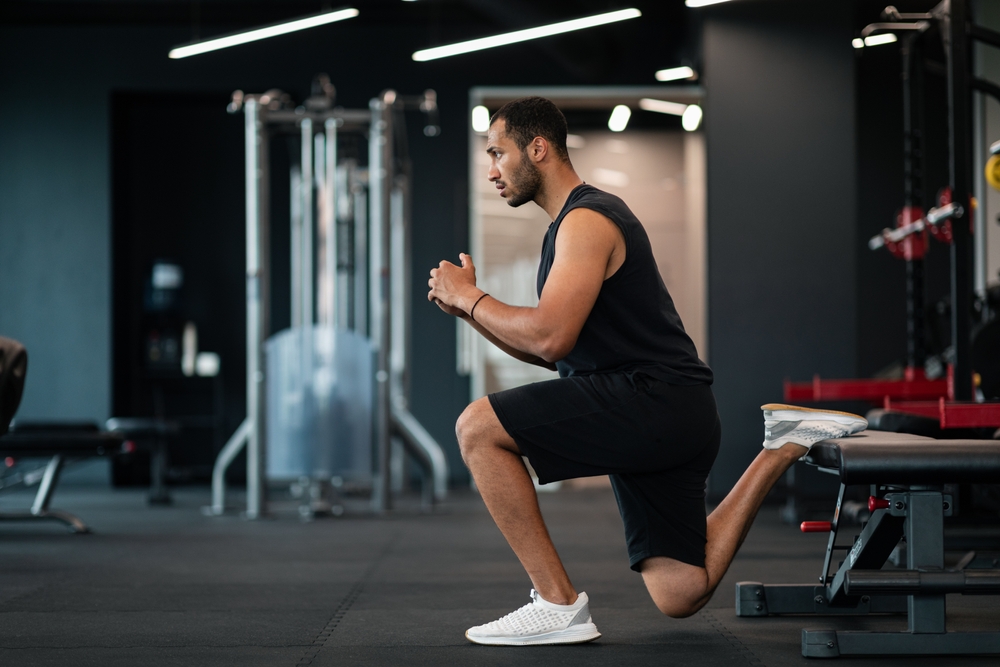
If you want to hit those quads hard, all you need is a bench or elevated platform for Bulgarian split squats. Here’s how they’re done.
- Rest your back leg on the bench or surface behind you. You should stand close enough to the bench to allow a full range of motion as you squat with the front leg.
- Start from the bottom of the position to ensure your front knee is positioned directly over your ankle.
- Stand up while keeping a straight back and neck.
- Lower yourself back down to the bottom of the position.
Bulgarian split squats are a single leg movement, so make sure you repeat for each leg. Since you’re isolating one leg at a time, it’s a great way to help correct muscular or strength imbalances.
5) Walking Lunges
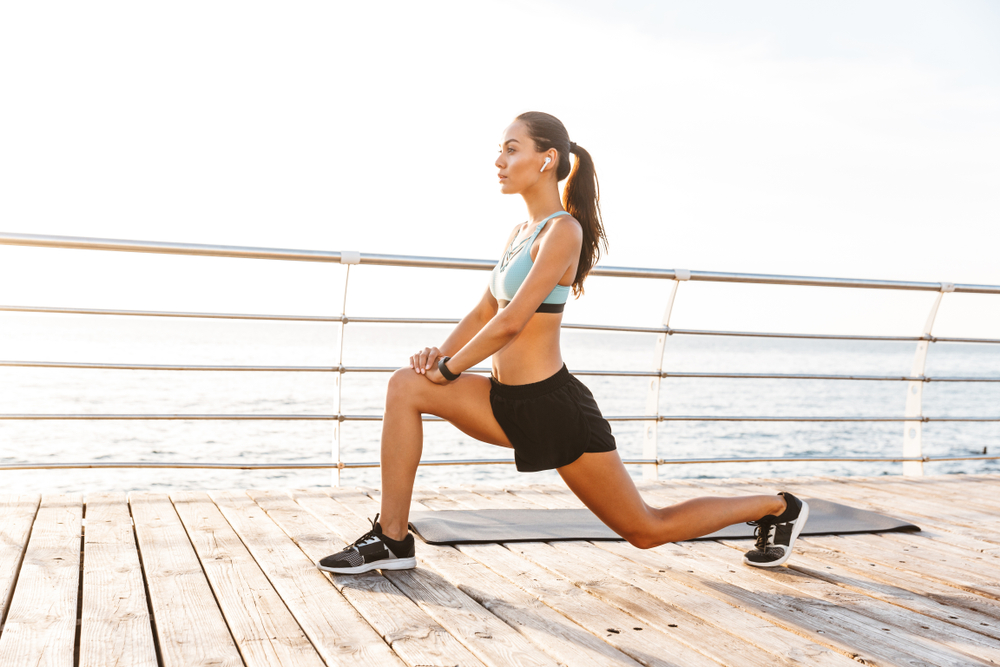
Walking lunges are very popular for activating our quads while also hitting the hips, glutes, and core. Even in a small space, you can almost always get a set of walking lunges in.
- Start from a standing position.
- Step forward and lean into your front leg. Your stance should be wide so you can achieve a wide range of motion during the movement.
- The front knee should bend as your back knee moves to lightly touch the ground. Control the movement and do not slam your knee into the ground.
- Once your back knee lightly touches or almost touches, push up with your front leg and bring your back leg forward to step into the deep stance again. Repeat the same steps now for your other leg.
- Repeat as needed.
Make sure to do an even number of reps. After all, two walking lunges just means one right lunge and one left!
Top 10 Additional Lower Body Exercises
Some folks dread leg day and avoid it altogether. Others know that leg day is super important, but they’re just not sure what to do once they’re there. What they don’t know is that there are so many different things they can do to work out the lower body.
Here are 10 additional lower body exercises to help you shake things up next leg day.
- Mountain climbers
- High knees
- Jumping squats
- Jumping lunges
- Wall sits
- Sumo squats
- Pistol squats
- Donkey kicks
- Raised glute bridge
- Box jumps or step-ups
What’s great about these exercises is that they require minimal or no equipment at all to perform. Try picking a few of your favorites and putting them together in a timed AMRAP-style WOD. The following week, do that same WOD structure but with totally different exercises.
It’s a great way to keep things interesting while getting great results!


